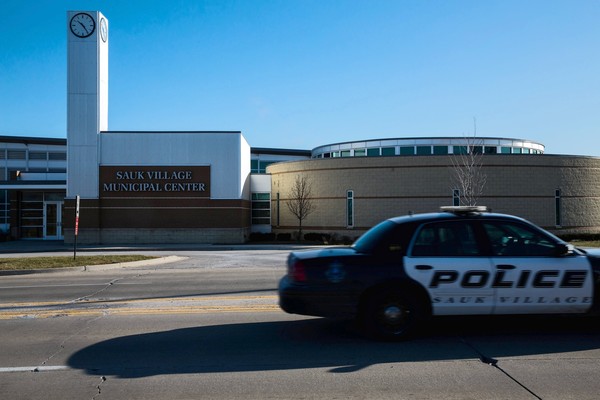
In the bubble of Chicago and its perilous financial situation, we don't always think about the financial conditions in neighboring suburbs, save for the occasional look at specific disasters like Bridgeview's very expensive support of the Chicago Fire's stadium. But Joe Mahr and Joseph Ryan of the Trib (who wrote the Bridgeview piece) have an excellent overview of suburban taxation: "Small suburbs exploit tax loophole: Even in places where residents might expect tighter oversight, Illinois' borrowing rules let towns sidestep voters, make decisions that can backfire on taxpayers."
Previous Tribune investigations have exposed how Illinois has no borrowing limits for many mostly bigger cities and villages, and how that has fostered risky gambles that have sent taxes skyrocketing.
But for many small towns such as Sauk Village, the oversight is supposed to be tighter. Officials are limited in how much they can raise property taxes and typically need voter approval for big borrowing.
Yet, the latest Tribune investigation found these suburbs turning to another device — called alternate-revenue bonds — to let them borrow big. This device comes from a little-known chapter of Illinois law that lets towns borrow in a way that sidesteps voters and property tax caps.
Suburban towns are allowed to use alternate-revenue bonds if they project that property taxes won't go up. If the projections don't pan out, property taxes go up.
So if voters aren't providing oversight, who is? No one, really:
No state agency double-checks the financial projections, or keeps tabs on towns that can't — or won't — keep their promises to avoid tax hikes.
The Illinois comptroller collects annual loan data from towns but doesn't pass judgment on them. The Illinois secretary of state focuses on safeguards for those who hold the IOUs of town debt, not residents paying them off. The attorney general's office, by law, can advocate for taxpayers blatantly misled by the deals, but the issue has never been raised there.
This ties back into something you may recall: Illinois has more local governments, almost 7,000, than any other state in the country, a democratic kludge that originated from the need to circumvent borrowing limits. Like Pennsylvania, the other state with an unusual number of governments for its size and population, it's a township state, which means there are a lot of small governments for the state to keep up with. So it doesn't. That's why the State Budget Crisis Task Force mentioned the state's sprawling, overlapping governments in its report:
Crowding out of the state budget also threatens what meager fiscal oversight exists in Illinois. Local governments other than school districts are required to file financial reports with the comptroller, but that office does not have the necessary staff to review the reports, nor does it have the authority to force a local government to change its practices.
Alternate-revenue bonds aren't the only place in state government where the large number of governments and debt intersect. There's also teacher pensions, which are determined by localities and paid for by the state (except in Chicago, where taxpayers pay for city teacher pensions on their own, plus statewide pensions):
Local districts would award huge pay hikes in the final years of a teacher's or administrator's career, which boosted his pension payout. The school district had to pay only for the short-term spike in pay, but the state pension fundwas on the hook for years, even decades, of higher pension payments based on salary. Local school boards got to play Santa Claus and send the bill to Springfield.
So let's consolidate, right? Um:
The Legislature didn't bite last year on Quinn's call to cut the number of school districts. It did, though, create the Classrooms First Commission, charged with studying the issue. The commission, chaired by Lt. Gov. Sheila Simon, poured some cold water on consolidation when it reported this month that cutting the number of districts by nearly half would … cost the state $3.7 billion.
The commission points to financial incentives that the state promises to merging districts — mainly additional money for teachers' salaries. For instance, when high school and elementary districts merge, the state provides money to bring lower-paid teachers up to the level of higher-paid teachers. (High school teachers generally have a higher pay scale.) There's also a flat $4,000 payment to the district for every teacher, administrator and other professional staffer.
It's a thicket: not just overlapping governments, but overlapping kludges, with numerous knots to be untied before it can be unwound.
Photograph: Chicago Tribune


